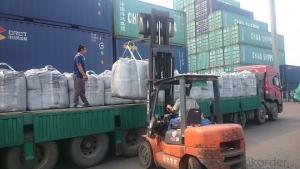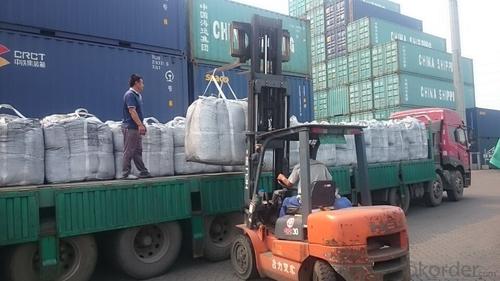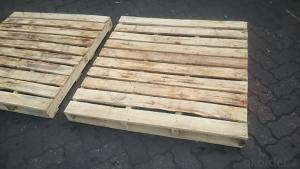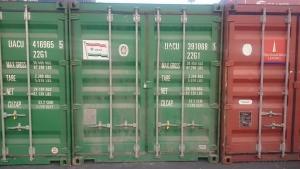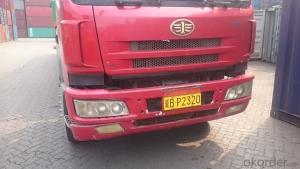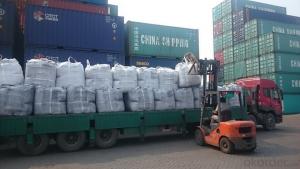Used in EAF as Charge Coke for for Foundry Plants with VM 2%max
- Loading Port:
- Tianjin
- Payment Terms:
- TT OR LC
- Min Order Qty:
- 21 m.t.
- Supply Capability:
- 6000 m.t./month
OKorder Service Pledge
OKorder Financial Service
You Might Also Like
Introduction:
Calcined anthracite can be called carbon additive, carbon raiser, recarburizer, injection coke, charging coke, gas calcined anthracite.
Carbon Additive/Calcined Anthracite Coal may substitute massively refinery coke or graphite. Meanwhile its cost is much less than the refinery coke and graphite. Carbon Additive is mainly used in electric steel ovens, water filtering, rust removal in shipbuilding and production of carbon material.
It has good characteristics with low ash, low resistivity, low sulphur, high carbon and high density. It is the best material for high quality carbon products. It is used as carbon additive in steel industry or fuel.
Features:
Best quality Taixi anthracite as raw materials through high temperature calcined at 800-1200 ℃ by the DC electric calciner with results in eliminating the moisture and volatile matter from Anthracite efficiently, improving the density and the electric conductivity and strengthening the mechanical strength and anti-oxidation, It has good characteristics with low ash, low resistivity, low carbon and high density. It is the best material for high quality carbon products, it is used as carbon additive in steel industry or fuel.
Specifications:
F.C.% | 95MIN | 94MIN | 93MIN | 92MIN | 90MIN | 85MIN | 84MIN |
ASH % | 4MAX | 5MAX | 6 MAX | 6.5MAX | 8.5MAX | 12MAX | 13MAX |
V.M.% | 1 MAX | 1MAX | 1.0MAX | 1.5MAX | 1.5MAX | 3 MAX | 3 MAX |
SULFUR % | 0.3MAX | 0.3MAX | 0.3MAX | 0.35MAX | 0.35MAX | 0.5MAX | 0.5MAX |
MOISTURE % | 0.5MAX | 0.5MAX | 0.5MAX | 0.5MAX | 0.5MAX | 1MAX | 1MAX |
Pictures
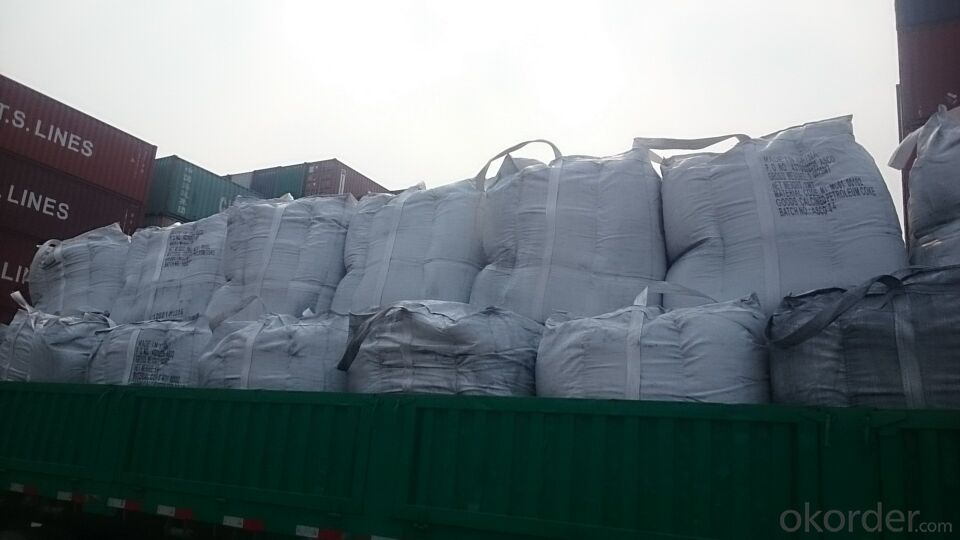

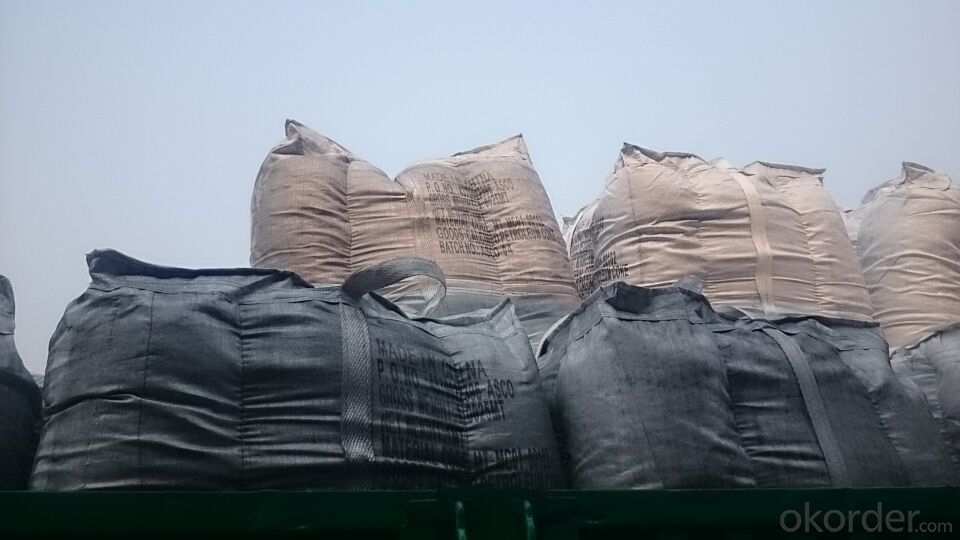
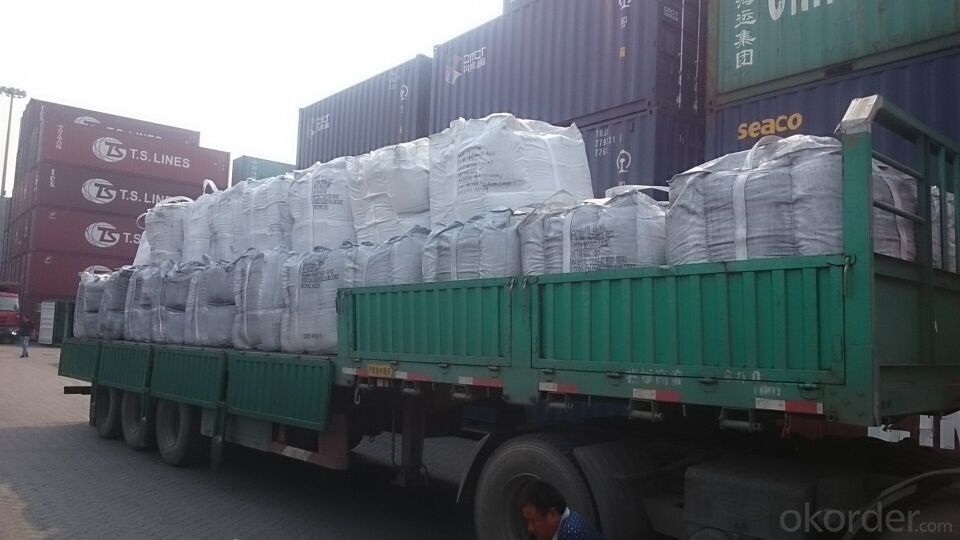
FAQ:
Packing:
(1). Waterproof jumbo bags: 800kgs~1100kgs/ bag according to different grain sizes;
(2). Waterproof PP woven bags / Paper bags: 5kg / 7.5kg / 12.5kg / 20kg / 25kg / 30kg / 50kg small bags;
(3). Small bags into jumbo bags: waterproof PP woven bags / paper bags in 800kg ~1100kg jumbo bags.
Payment terms
20% down payment and 80% against copy of B/L.
Workable LC at sight,
- Q: How does carbon impact the stability of desert ecosystems?
- Carbon can impact the stability of desert ecosystems through various mechanisms. Increased carbon dioxide (CO2) levels in the atmosphere due to human activities, such as burning fossil fuels, can contribute to climate change, leading to higher temperatures and altered precipitation patterns in deserts. These changes can disrupt the delicate balance of desert ecosystems, affecting the availability of water and resources for plants and animals. Additionally, excessive carbon emissions can contribute to desertification, as increased CO2 can stimulate the growth of invasive plant species, which outcompete native vegetation and disrupt the ecosystem's biodiversity. Therefore, carbon plays a significant role in destabilizing desert ecosystems and should be managed to ensure their long-term sustainability.
- Q: What are the sources of carbon emissions?
- Carbon emissions are primarily caused by human activities that involve the burning of fossil fuels such as coal, oil, and natural gas. The largest source of carbon emissions is the burning of fossil fuels for electricity generation, transportation, and industrial processes. Power plants that burn coal and natural gas account for a significant portion of carbon emissions, as do vehicles that run on gasoline and diesel fuels. Industrial processes, particularly in sectors such as cement production and steel manufacturing, also contribute to carbon emissions. These processes release carbon dioxide (CO2) during the chemical reactions involved in the production of these materials. Deforestation and land-use changes are another significant source of carbon emissions. When forests are cleared, the carbon stored in trees is released into the atmosphere as CO2. Additionally, the loss of forests reduces the Earth's capacity to absorb CO2 through photosynthesis, exacerbating the problem. Agricultural activities, particularly livestock farming, contribute to carbon emissions through the release of methane (CH4) from the digestive systems of animals and the decay of organic matter. The use of synthetic fertilizers in agriculture also contributes to carbon emissions as they release nitrous oxide (N2O), a potent greenhouse gas. Other sources of carbon emissions include waste management practices, particularly the decomposition of organic waste in landfills, and certain industrial processes that release other greenhouse gases such as hydrofluorocarbons (HFCs) and sulfur hexafluoride (SF6). It is important to note that while carbon emissions are predominantly caused by human activities, natural processes such as volcanic eruptions and wildfires also release carbon dioxide into the atmosphere. However, these natural sources are significantly smaller compared to human-induced emissions.
- Q: Is graphite carbon?
- They are arranged in eight planes. The net shape is the diamond, which is arranged in a regular hexagon and a layer, and then graphite is formedDiamond and graphite are carbon elements
- Q: What are the different types of carbon-based polymers?
- Carbon-based polymers come in various types, each possessing unique properties and applications. Some commonly encountered variants include: 1. Polyethylene (PE): Esteemed for its exceptional strength and chemical resistance, PE is extensively utilized in packaging materials, plastic bottles, and pipes. 2. Polypropylene (PP): PP is akin to PE, but it boasts a higher melting point and superior heat resistance. This makes it a popular choice for automotive parts, textiles, and food packaging. 3. Polystyrene (PS): PS is a lightweight and rigid polymer frequently employed in packaging materials, disposable utensils, and insulation. 4. Polyvinyl chloride (PVC): PVC is a versatile polymer that can be either rigid or flexible based on the additives employed. It finds common application in pipes, electrical insulation, and flooring. 5. Polyethylene terephthalate (PET): PET is a robust and lightweight polymer commonly found in beverage bottles, food containers, and synthetic fibers. 6. Polyurethane (PU): PU is a flexible and durable polymer utilized in foams, coatings, adhesives, and textiles. 7. Polycarbonate (PC): PC is a robust and transparent polymer regularly utilized in eyeglass lenses, safety goggles, and electronic components. 8. Phenolic resins: Renowned for their exceptional heat resistance, these polymers are commonly employed in coatings, adhesives, and electrical components. These examples represent only a fraction of the diverse range of carbon-based polymers available. Each type possesses specific properties and applications, rendering them suitable for a wide array of industries and products.
- Q: How does carbon contribute to the flavor of food?
- Carbon, in the form of charcoal or charred substances, can contribute to the flavor of food in several ways. Firstly, when food is grilled or roasted over charcoal, the carbon imparts a smoky flavor to the food, enhancing its taste and aroma. This smokiness is particularly desirable in foods like barbecued meats, vegetables, or even certain cheeses, as it adds a distinct and enjoyable element to the overall flavor profile. Furthermore, carbon can also act as a natural filter, absorbing and removing impurities from food and beverages. This filtration process can help eliminate unpleasant odors and flavors, resulting in a cleaner and more refined taste. For example, activated carbon is commonly used in the production of alcoholic beverages like whiskey or vodka to remove impurities and create a smoother, more flavorful drink. In addition, carbon can contribute to the development of desirable texture and color in certain foods. When sugar or other carbohydrates are heated, they undergo a process called caramelization, where the sugars react with heat to form a complex mixture of carbon compounds. This caramelization process creates rich, golden-brown hues and a unique depth of flavor, enhancing the overall taste experience. Lastly, carbon can also play a role in the fermentation process, which is essential in the production of various foods and beverages. During fermentation, microorganisms consume sugars and release carbon dioxide, which contributes to the texture, flavor, and carbonation of the final product. This is particularly evident in bread, beer, wine, and other fermented foods where the presence of carbon dioxide adds lightness, complexity, and effervescence to the flavor profile. In summary, carbon contributes to the flavor of food through its ability to impart smokiness, act as a natural filter, facilitate caramelization, and participate in fermentation processes. Its presence in various forms enhances the taste, texture, and overall enjoyment of a wide range of food and beverages.
- Q: What are the carbon monoxide collection methods?
- Drainage methodExhaust air cannot be used because CO is poisonous
- Q: How do you stick carbon fabric?
- 1 、 construction tools and equipmentThe main equipment includes cutting machine, angle grinder and roller brush2, concrete substrate treatment(1) remove the damaged parts and damaged parts of the concrete parts and reach the compacted parts(2) check whether exposed steel bars are rusted or not. If there is rust, the necessary treatment should be carried out(3) repair the damaged part of the component through the chisel, the cleaning and the exposed ribs, and then use the epoxy mortar, which is higher than the strength of the original component concrete, to repair and restore to the surface(4) crack repair. Cracks with a width of less than 0.20mm shall be coated with epoxy resin and sealed. Cracks greater than or equal to 0.20mm shall be sewed with epoxy resin(5) to the designated location, scope of patch repair and reinforcement of ink, according to the design requirements.(6) burnish the surface of the member (the connecting part of the concrete component, the difference of the section of the template), and make sure that the repaired section is as smooth as possible(7) the angular position, with grinder. Rounding radius should be larger than 30mm, the minimum of not less than 20mm.
- Q: What is carbon neutral construction?
- Carbon neutral construction entails a sustainable approach to constructing and designing structures that aims to minimize or counterbalance the amount of carbon emissions generated during the construction process. The objective is to achieve equilibrium between the carbon emissions released into the atmosphere and those that are eliminated or offset through various measures. To accomplish carbon neutrality in construction, several strategies can be employed. Firstly, the implementation of energy-efficient design principles helps reduce the overall energy consumption of the building. This includes incorporating insulation, efficient HVAC systems, and energy-saving appliances and lighting. In addition, sustainable building materials are utilized, such as recycled materials or those with a minimal carbon footprint. This decreases the energy required for material production and transportation, thus minimizing carbon emissions. Moreover, renewable energy sources are integrated into the construction process. This may involve the installation of solar panels, wind turbines, or geothermal systems to generate clean energy for the building's operations. By reducing reliance on fossil fuels, carbon emissions associated with energy consumption are significantly decreased. Carbon offsetting is another crucial element of carbon neutral construction. This entails investing in projects or initiatives that reduce or eliminate greenhouse gas emissions elsewhere, thereby compensating for the emissions produced during construction. Examples of carbon offsetting activities include reforestation projects, investment in renewable energy initiatives, or support for methane capture programs. Ultimately, carbon neutral construction aims to minimize the environmental impact of building construction and operation by reducing carbon emissions throughout the entire lifespan of the building. By adopting energy-efficient design principles, utilizing sustainable materials, integrating renewable energy sources, and offsetting carbon emissions, carbon neutral construction contributes to the mitigation of climate change and the creation of a more sustainable future.
- Q: What are the effects of carbon emissions on the stability of urban infrastructure?
- Carbon emissions have a significant impact on the stability of urban infrastructure. The release of carbon dioxide and other greenhouse gases into the atmosphere from various sources, such as industrial activities, transportation, and energy production, contribute to climate change. This, in turn, poses several challenges to urban infrastructure. One of the primary effects of carbon emissions on urban infrastructure stability is the increased frequency and severity of extreme weather events. Climate change leads to more intense heatwaves, storms, hurricanes, and flooding, which can cause significant damage to buildings, roads, bridges, and other infrastructure components. Higher temperatures can also lead to the expansion and contraction of materials, resulting in structural issues and decreased durability. Moreover, carbon emissions contribute to rising sea levels due to the melting of polar ice caps. This puts coastal cities at risk of flooding and erosion, threatening critical infrastructure located in these regions. As sea levels continue to rise, the stability of urban infrastructure, including ports, water treatment facilities, and transportation systems, is compromised. Another consequence of carbon emissions on urban infrastructure stability is the impact on energy supply and demand. As climate change progresses, extreme weather events can disrupt power grids and energy infrastructure, leading to blackouts and disruptions in services. Additionally, increased energy demand for cooling systems in response to rising temperatures can overload existing infrastructure, putting strain on the electrical grid. Furthermore, carbon emissions contribute to air pollution, which adversely affects the health and well-being of urban populations. Poor air quality can lead to respiratory and cardiovascular diseases, impacting the workforce and productivity. This can indirectly affect the stability of urban infrastructure as a healthy and productive population is essential for the maintenance and functioning of cities. To mitigate the effects of carbon emissions on the stability of urban infrastructure, various measures can be taken. These include shifting to renewable energy sources, improving energy efficiency in buildings and transportation, implementing sustainable urban planning strategies, and investing in climate-resilient infrastructure. These actions can help reduce carbon emissions and build infrastructure that is better equipped to withstand the challenges posed by climate change, ultimately ensuring the stability and resilience of urban areas.
- Q: What are the effects of carbon emissions on the stability of grasslands?
- Carbon emissions have a significant impact on the stability of grasslands. One of the main effects is the alteration of the climate, specifically through the greenhouse effect. Carbon dioxide (CO2) is a major greenhouse gas, and the increased concentration of CO2 in the atmosphere leads to global warming. This rise in temperature affects grasslands by altering their natural growth patterns and disrupting the delicate balance of their ecosystems. Higher temperatures caused by carbon emissions can lead to increased evaporation rates, resulting in drier soil conditions. Grasslands are adapted to specific moisture levels, and any changes in these conditions can lead to reduced plant growth and increased susceptibility to drought. As a consequence, grasslands become less stable and more prone to desertification. Moreover, elevated levels of carbon dioxide can affect the nutritional quality of grasses. As CO2 concentrations increase, the relative proportion of essential nutrients in grasses may decrease. This phenomenon, known as nutrient dilution, can impact the health and productivity of herbivores that rely on these grasslands for sustenance. The decline in nutritional value can disrupt the delicate balance of predator-prey relationships and lead to a decline in biodiversity. Additionally, carbon emissions contribute to the acidification of soils. Increased carbon dioxide dissolves in rainwater, forming carbonic acid, which lowers the pH of the soil. Grasses are sensitive to changes in soil pH, and acidification can negatively affect their growth and nutrient uptake. Acidic soil conditions can also lead to the loss of important microorganisms that contribute to a healthy soil ecosystem, further destabilizing grasslands. Lastly, carbon emissions have indirect effects on grasslands through climate change-induced alterations in precipitation patterns. Changes in rainfall patterns can lead to shifts in plant composition and distribution, favoring invasive species or altering the competitive balance between different grass species. This can disrupt the stability and functioning of grassland ecosystems. In conclusion, carbon emissions have numerous detrimental effects on the stability of grasslands. These include changes in climate, increased vulnerability to drought, nutrient dilution, soil acidification, and alterations in precipitation patterns. It is crucial to reduce carbon emissions and mitigate the impacts of climate change to preserve the stability and integrity of grassland ecosystems.
Send your message to us
Used in EAF as Charge Coke for for Foundry Plants with VM 2%max
- Loading Port:
- Tianjin
- Payment Terms:
- TT OR LC
- Min Order Qty:
- 21 m.t.
- Supply Capability:
- 6000 m.t./month
OKorder Service Pledge
OKorder Financial Service
Similar products
Hot products
Hot Searches
